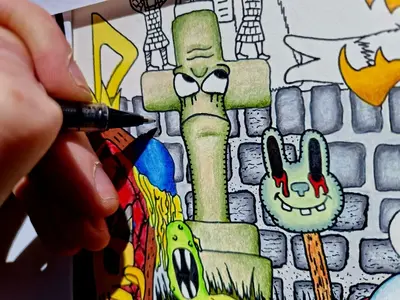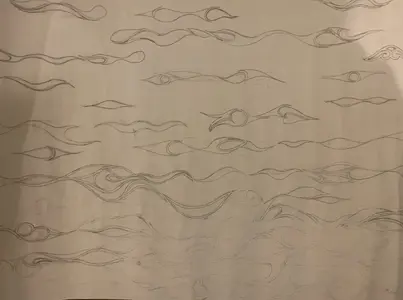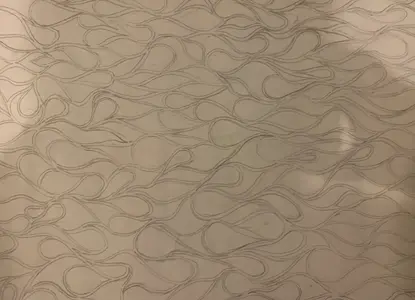Crabcore
The Rebirth of Slime
There are a couple of threads about specific users' art tools but I was hoping to make a bit of a master list here so that others can find inspiration on the fly. So even if you're already made an individual thread, you can totally reiterate your methods here so we can all ask specific questions and really get to know your specific workflow! Or, if you've never discussed your art workflow (or the tools you use the most), we'd probably all love to hear about how you make your artwork! Feel free to share as much of the journey as you'd like!
Posting examples would really make this a lot of fun, too! So, if you want to demonstrate some new workflow or something too, that would be really awesome! I'm always curious about what others are doing in order to create their art, so your contributions will not go unnoticed!
I guess I need to start with mine. Gulp. Well... it's complicated.
(Originally I forgot to post a picture!)

So, what do you use?
Posting examples would really make this a lot of fun, too! So, if you want to demonstrate some new workflow or something too, that would be really awesome! I'm always curious about what others are doing in order to create their art, so your contributions will not go unnoticed!
I guess I need to start with mine. Gulp. Well... it's complicated.
(Originally I forgot to post a picture!)
I started doing graphics (before I went to school for graphic design) because I needed artwork for my music, so I started with the basic raster editor Photoshop so I could make simple composites, and then eventually moved onto Affinity Photo & Affinity Designer as I got more into actually using vector art (I never really gelled with Illustrator). Later on I stumbled upon The Nik Collection (PS plugins), which I now use on mostly all of my photography because you can really dial in some crazy filter action.
Later on I started using Opencanvas and Clip Studio Paint when I got my first drawing tablet, and I still use them both a hecka-lot - CSP for their awesome 3D reference models, since I can't draw a human on my own to save my life. I picked up PD Howler, Artipic, and Pixeluvo on steam during one of their bigger sales, and although I don't use them very much anymore (due to lackluster feature sets), Howler is still really cool for randomized procedural generation.
I ventured into creative coding a little over a year ago and started making cool little programs in Processing, Python and p5.js, dabbling a little bit with Touchdesigner (visual programming) in the meantime, although I'd love to really do a deep-dive on the latter sometime and level-up my skills.
I also like to use consoles... not for gaming so much, but for art. My 2DS is modded and loaded up with voxel editors, Colors 3D, and SmileBASIC and all sorts of other apps I haven't even begun to scrape the surface with. Mostly I use Colors 3D for painting and SB for more of that sweet coding action on the go. I also just recently got a switch for the later versions of both apps, Colors Live and SmileBASIC4 with the addition of Fuze4, which I've managed to make some crazy stuff with so far.
Being a fan of pixel art, the aforementioned Colors Live and Aseprite are my jams for that (aside from fantasy consoles - more on that below).
Filter Forge was a massive discovery for me about a year ago as well; being able to combine visual programming / node-based editing with creating my own Lua scripts (all as a Photoshop plugin, no less) has really been a huge for my creativity. I've been able to create so many cool filters with it, which is basically 99% of my contributions to the Art Remix Thread. A lot of the time I'll program and script an entire filter for someone's piece, run iterations on it, or whatever. It's just so much fun.
Lately, I've been dabbling in Blender because digital sculpting is way too much fun. I'd like to eventually get into the 3D-modelling side of things, but just being able to freely sculpt things and take shots of it has been so much fun.
Fantasy consoles like Pyxel, Pico-8, Basic8 and TIC-80 are pretty big for me, too. Being able to draw and code anything up on the fly with very minimal setup is awesome. Even though these are essentially game engines, I just use them for practicing my physics programming and creating animations / artwork. I've got a lot to learn in this territory but it's super rewarding and has supercharged my inspiration over the past few months.
Also, I guess it counts, but my 'budget' Rebel T7 is a huge star in my artistic endeavors. I had never owned a camera prior to 2020 and I'm so glad I got it - it's all I'll ever need and it's a workhorse in my workflow. Sometimes I'll just use it to create texture / asset packs from household surfaces, add them to other projects, etc. It's way too much to list all in one go, but it just does so much for my artwork.
Also, I keep a metric crap-ton of markers, pencils, pens, acrylics, oils, glue sticks and magazines around for whatever. I love doing acrylic pours, 'analog' collages, and whatever types of abstract stuff I can come up with. I've been known to snap a picture, create a vector out of it, print it off and paint it in acrylc just because I can. I really love imagining stuff over and over again because it's like its own little field trip everytime.
Later on I started using Opencanvas and Clip Studio Paint when I got my first drawing tablet, and I still use them both a hecka-lot - CSP for their awesome 3D reference models, since I can't draw a human on my own to save my life. I picked up PD Howler, Artipic, and Pixeluvo on steam during one of their bigger sales, and although I don't use them very much anymore (due to lackluster feature sets), Howler is still really cool for randomized procedural generation.
I ventured into creative coding a little over a year ago and started making cool little programs in Processing, Python and p5.js, dabbling a little bit with Touchdesigner (visual programming) in the meantime, although I'd love to really do a deep-dive on the latter sometime and level-up my skills.
I also like to use consoles... not for gaming so much, but for art. My 2DS is modded and loaded up with voxel editors, Colors 3D, and SmileBASIC and all sorts of other apps I haven't even begun to scrape the surface with. Mostly I use Colors 3D for painting and SB for more of that sweet coding action on the go. I also just recently got a switch for the later versions of both apps, Colors Live and SmileBASIC4 with the addition of Fuze4, which I've managed to make some crazy stuff with so far.
Being a fan of pixel art, the aforementioned Colors Live and Aseprite are my jams for that (aside from fantasy consoles - more on that below).
Filter Forge was a massive discovery for me about a year ago as well; being able to combine visual programming / node-based editing with creating my own Lua scripts (all as a Photoshop plugin, no less) has really been a huge for my creativity. I've been able to create so many cool filters with it, which is basically 99% of my contributions to the Art Remix Thread. A lot of the time I'll program and script an entire filter for someone's piece, run iterations on it, or whatever. It's just so much fun.
Lately, I've been dabbling in Blender because digital sculpting is way too much fun. I'd like to eventually get into the 3D-modelling side of things, but just being able to freely sculpt things and take shots of it has been so much fun.
Fantasy consoles like Pyxel, Pico-8, Basic8 and TIC-80 are pretty big for me, too. Being able to draw and code anything up on the fly with very minimal setup is awesome. Even though these are essentially game engines, I just use them for practicing my physics programming and creating animations / artwork. I've got a lot to learn in this territory but it's super rewarding and has supercharged my inspiration over the past few months.
Also, I guess it counts, but my 'budget' Rebel T7 is a huge star in my artistic endeavors. I had never owned a camera prior to 2020 and I'm so glad I got it - it's all I'll ever need and it's a workhorse in my workflow. Sometimes I'll just use it to create texture / asset packs from household surfaces, add them to other projects, etc. It's way too much to list all in one go, but it just does so much for my artwork.
Also, I keep a metric crap-ton of markers, pencils, pens, acrylics, oils, glue sticks and magazines around for whatever. I love doing acrylic pours, 'analog' collages, and whatever types of abstract stuff I can come up with. I've been known to snap a picture, create a vector out of it, print it off and paint it in acrylc just because I can. I really love imagining stuff over and over again because it's like its own little field trip everytime.
Last edited by a moderator:


